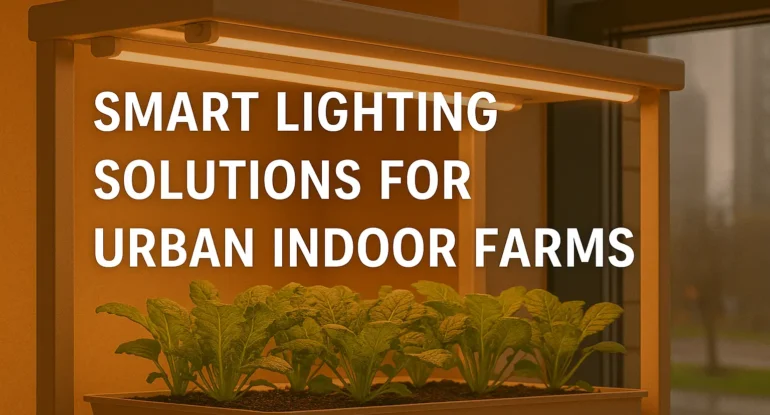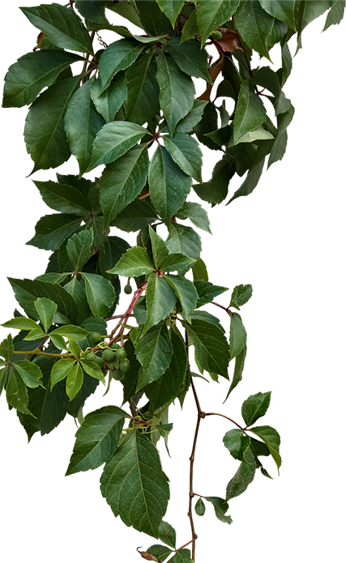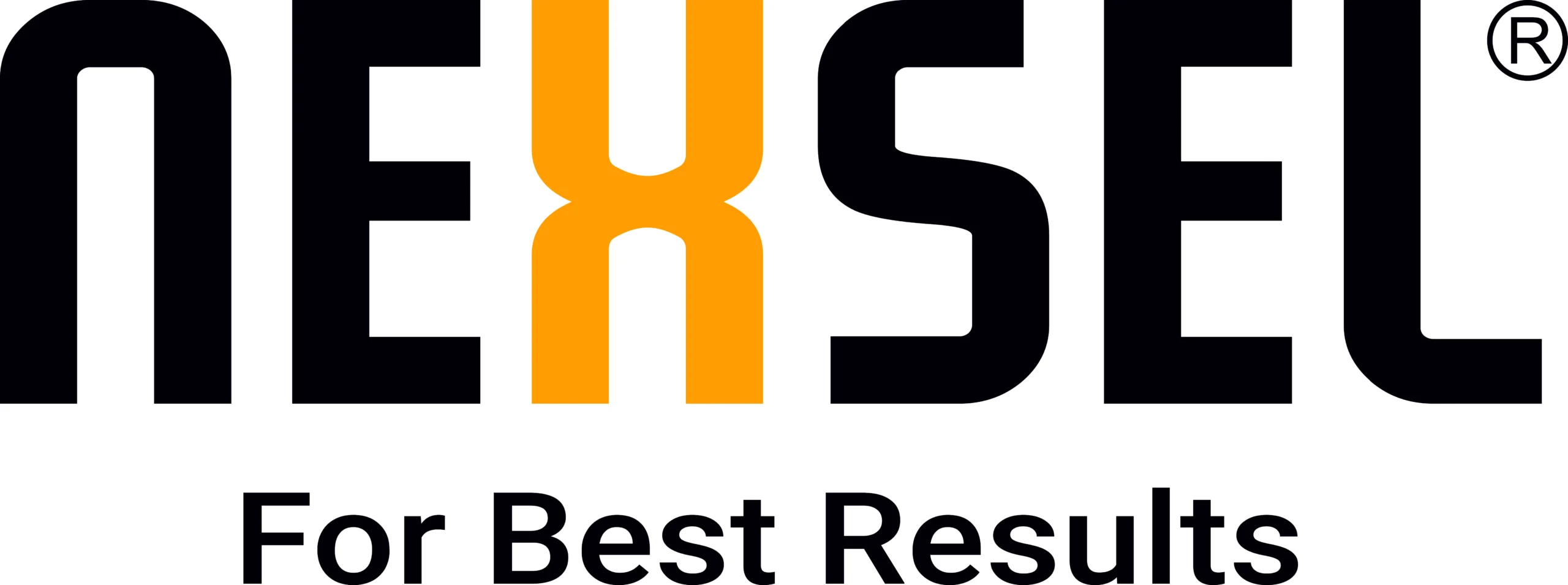
21
Jun
Best Fruits for Indoor Farming in New Zealand: A Complete Grower’s Guide
Indoor farming has surged in popularity in New Zealand thanks to rising food costs, unpredictable weather, and the desire for sustainable, homegrown produce. While leafy greens and herbs are commonly grown indoors, fruit-bearing plants can also thrive in controlled environments—with the right setup. Whether you live in a compact Auckland apartment or have a backyard greenhouse in Canterbury, growing fruit indoors offers year-round harvests, better pest control, and fresher produce at your fingertips. In this blog, we explore the best fruits for indoor farming in New Zealand, the optimal growing conditions, and how to achieve maximum yields using hydroponics, containers, and LED grow lights. Can Fruits Really Be Grown Indoors in New Zealand? Absolutely! With advancements in LED lighting, nutrient delivery systems, and compact dwarf varieties, it’s entirely possible to grow many fruit species indoors—even in New Zealand’s climate. Benefits of indoor fruit farming in NZ include: Protection from harsh weather (especially in South Island regions) Reduced pest and disease risk Year-round yields with grow lights Better water conservation with hydroponics Fresh, organic fruit without chemical pesticides Top 10 Best Fruits to Grow Indoors in New Zealand Here’s a curated list of fruits that thrive indoors, considering NZ’s seasonal conditions and indoor farming capabilities. 1. Strawberries ✅ Ideal for: Small spaces, hanging baskets, hydroponics ✅ Light: 10–12 hours/day with full-spectrum LED grow lights ✅ Variety Tip: Try “Temptation” or “Tristan” – both compact NZ varieties Strawberries are compact, fast-growing, and love well-lit environments. You can grow them in containers, vertical towers, or NFT hydroponic systems. 2. Dwarf Tomatoes ✅ Ideal for: Container gardening, greenhouses, indoor grow tents ✅ Light: 12–14 hours/day ✅ Variety Tip: “Tiny Tim”, “Patio Princess”, or NZ hybrid cherry tomatoes Although technically a fruit, tomatoes are one of the most productive and rewarding indoor crops. Use trellises or tomato cages for support. 3. Blueberries ✅ Ideal for: Cool indoor environments (especially in South Island) ✅ Light: 10–12 hours/day ✅ Variety Tip: “Northland” or “Misty” – low chill NZ-suited varieties Blueberries thrive in acidic soil and need cross-pollination, so plant at least two different cultivars. Great for pots and large containers. 4. Figs ✅ Ideal for: Greenhouses, large containers, indoor corners with good light ✅ Light: 10+ hours/day ✅ Variety Tip: “Black Mission” or “Petite Negra” dwarf fig trees Figs do surprisingly well indoors and are self-pollinating. They prefer warmth and dryness, making them perfect for well-insulated rooms. 5. Meyer Lemons ✅ Ideal for: Sunrooms, balconies, or warm indoor areas ✅ Light: 12+ hours/day ✅ Variety Tip: “Improved Meyer” – a dwarf citrus cultivar Meyer lemons are one of the easiest citrus fruits to grow indoors in NZ. They produce fragrant flowers and juicy lemons, even in pots. 6. Passionfruit (in Grow Tents or Greenhouses) ✅ Ideal for: Indoor trellis walls or vertical gardens ✅ Light: 12+ hours/day ✅ Variety Tip: “Black Passion” – NZ-adapted variety While a bit more advanced, passionfruit can grow indoors with proper vine support, humidity, and light. Ensure good airflow to prevent fungal issues. 7. Banana (Dwarf Cavendish) ✅ Ideal for: Indoor atriums, conservatories ✅ Light: 12–14 hours/day ✅ Variety Tip: “Dwarf Cavendish” – compact and ornamental While bananas require more space, you can successfully grow dwarf varieties indoors, especially in North Island regions or heated indoor spaces. 8. Pineapple ✅ Ideal for: Indoor planters, sunrooms ✅ Light: 10+ hours/day ✅ Fun Fact: You can regrow pineapples from tops Pineapples are surprisingly easy to grow indoors from crowns. They love warmth, bright light, and well-drained soil. Water only when dry. 9. Gooseberries and Currants ✅ Ideal for: Indoor patios, greenhouses ✅ Light: 8–10 hours/day ✅ Variety Tip: Choose thornless gooseberries or “Red Lake” currants These NZ-favourite berries adapt well to containers and are shade-tolerant. Use organic compost-rich soil and prune regularly. 10. Chilli Peppers (Yes, a fruit!) ✅ Ideal for: Windowsills, kitchen counters, grow tents ✅ Light: 12–14 hours/day ✅ Variety Tip: “Thai Hot”, “Apache”, or “Numex” small fruiting types Chilli plants are compact, colourful, and fast to fruit. Ideal for beginner indoor growers, especially with LED lighting support. Lighting Tips for Indoor Fruit Production in NZ Unlike leafy greens, fruiting plants require more intense light and longer exposure times. Here’s how to set up your lighting: Type of Plant Daily Light Requirement Recommended Light Type Strawberries 10–12 hrs Full-spectrum LED Tomatoes 12–14 hrs Red/blue focused LED Lemons 12+ hrs High PAR full-spectrum Blueberries 10–12 hrs White-balanced LED Use grow light timers for consistency Keep lights 30–50 cm above plant tops Ensure good heat dissipation in grow tents Hydroponics for Fruit Production Hydroponic farming is booming in NZ for its low water usage and faster yields. For indoor fruiting: Use NFT systems for strawberries Drip systems for tomatoes and peppers Deep Water Culture (DWC) for leafy fruits Always monitor pH (5.5–6.5) and EC levels weekly for optimal nutrient uptake. Indoor Fruit Farming Challenges & Solutions Challenge Solution Pollination issues Use a small brush or electric pollinator manually Light deficiency in winter Invest in high-quality LED grow lights Overwatering Use moisture meters or smart sensors Pest control indoors Introduce neem oil sprays or sticky traps Limited space Use hanging baskets, vertical shelves, or towers Best Practices for Indoor Fruit Farming in NZ Use containers with drainage holes Rotate pots weekly for even light exposure Avoid sudden temperature drops in winter Fertilise regularly with fruit-specific nutrients Join local groups like “Indoor Growers NZ” on Facebook or Reddit Sustainability & Indoor Fruit Farming Indoor fruit farming contributes to a greener future in New Zealand by: Reducing food miles Encouraging water-saving hydroponics Promoting chemical-free growth Supporting urban food security Urban centres like Auckland, Wellington, and Christchurch are already seeing increased adoption of compact indoor farms, even in high-rise apartments. Conclusion Indoor fruit farming in New Zealand is not just possible—it’s deliciously rewarding. With a bit of planning, the right lighting, and proper varieties, you can enjoy fresh strawberries, juicy lemons, and vibrant cherry tomatoes from the comfort of your home. As technology continues to make indoor

21
Jun
Best Vegetables for Indoor Farming in New Zealand: Grow Fresh Produce Year-Round
With rising food costs, limited outdoor space, and an increased focus on sustainability, more New Zealanders are turning to indoor vegetable farming to grow their own fresh produce. Whether you’re living in a compact Auckland apartment or managing a smart indoor farm in Wellington, the good news is—you can successfully grow a wide variety of vegetables indoors. Thanks to modern techniques like hydroponics, LED grow lights, and vertical farming systems, growing vegetables indoors in New Zealand is easier and more productive than ever. In this detailed guide, we’ll cover the best vegetables to grow indoors, how to set up a productive system, and tips for year-round harvesting in Aotearoa. Why Indoor Vegetable Farming Is Gaining Popularity in New Zealand New Zealanders are increasingly choosing to grow food at home due to: Rising grocery prices Limited garden space in urban areas Unpredictable outdoor weather Desire for pesticide-free produce Interest in sustainable and local food systems Indoor farming provides complete control over temperature, light, water, and nutrients, allowing you to grow vegetables year-round—even during chilly winters or rainy seasons. Top Benefits of Growing Vegetables Indoors in NZ ✅ Fresh produce year-round ✅ No need for large outdoor gardens ✅ Fewer pests and diseases ✅ Faster harvest cycles ✅ Better water efficiency with hydroponics ✅ Environmentally friendly and space-saving Top 10 Vegetables to Grow Indoors in New Zealand 1. Lettuce ✅ Type: Loose-leaf or romaine varieties ✅ Light: 10–12 hours per day (use LED grow lights) ✅ Growth Time: 30–40 days ✅ Best For: Beginners, hydroponics, windowsills Lettuce is the most beginner-friendly indoor crop. It grows quickly, requires little space, and thrives in cool indoor environments. 2. Spinach ✅ Type: Baby spinach or New Zealand spinach ✅ Light: 10–12 hours/day ✅ Growth Time: 35–50 days ✅ Best For: Containers or vertical trays Spinach grows fast indoors, especially in cooler South Island homes. Rich in iron and versatile for salads or cooking. 3. Cherry Tomatoes ✅ Type: Dwarf or patio varieties ✅ Light: 12–14 hours/day (essential) ✅ Growth Time: 60–80 days ✅ Best For: Warm indoor spaces, grow tents Cherry tomatoes are compact, prolific, and ideal for indoor trellising. Ensure proper pollination and light exposure for fruiting. 4. Capsicum (Bell Peppers) ✅ Type: Mini bell or snacking varieties ✅ Light: 12–14 hours/day ✅ Growth Time: 60–90 days ✅ Best For: Greenhouses, containers with LED support Peppers love warmth and light. Indoors, they thrive in controlled environments and add vibrant colour and crunch to meals. 5. Radishes ✅ Type: Cherry Belle, French Breakfast ✅ Light: 8–10 hours/day ✅ Growth Time: 25–30 days ✅ Best For: Quick harvests, beginners Radishes are the fastest-growing indoor crop. Their short growth cycle makes them perfect for small-space or rotation planting. 6. Carrots (Mini Varieties) ✅ Type: Thumbelina, Little Finger ✅ Light: 10–12 hours/day ✅ Growth Time: 60–75 days ✅ Best For: Deep containers with loose soil Carrots need depth but not width. Choose smaller types and ensure the soil is free-draining and well-aerated. 7. Herbs (Basil, Parsley, Coriander, Mint) ✅ Light: 8–12 hours/day ✅ Growth Time: 30–50 days ✅ Best For: Windowsills, hydroponic kits While technically not vegetables, herbs are a must-have for every indoor gardener in NZ. They’re aromatic, space-efficient, and high-yielding. 8. Green Beans ✅ Type: Bush beans (compact variety) ✅ Light: 10–12 hours/day ✅ Growth Time: 45–60 days ✅ Best For: Trellised containers, warm rooms Beans can grow indoors with support poles. They’re high in protein and produce multiple harvests if maintained well. 9. Spring Onions ✅ Light: 8–10 hours/day ✅ Growth Time: 30–40 days ✅ Best For: Recycled containers, small pots Scallions or spring onions are low-maintenance and regrow quickly. Ideal for small spaces or as a cut-and-come-again crop. 10. Kale ✅ Light: 10–12 hours/day ✅ Growth Time: 50–70 days ✅ Best For: Winter indoor gardens, hydroponic trays Kale is a cool-loving green that thrives in NZ homes year-round, particularly during the colder months. Best Growing Methods for Indoor Vegetables 🌱 1. Soil-Based Containers Use organic potting mix, choose pots with drainage holes, and water consistently. Best for carrots, spinach, and kale. 💧 2. Hydroponic Systems NFT (Nutrient Film Technique), Kratky, or Deep Water Culture setups are excellent for lettuce, herbs, and leafy greens. 🌿 3. Vertical Farming Racks Maximize vertical space with tiered trays and LED grow lights. Perfect for greens, herbs, and compact vegetables. Essential Equipment for Indoor Vegetable Farming Full-spectrum LED grow lights (10–14 hrs daily) pH & EC meters (especially for hydroponics) Timers for lighting automation Ventilation or airflow fans Smart irrigation kits or manual spray bottles Moisture meters to avoid overwatering Indoor Vegetable Farming Tips for New Zealand Conditions 🌤 Adjust light hours in winter when daylight is limited 🌡 Keep temperature between 18–24°C for most vegetables 🐛 Watch for pests like whiteflies or aphids—use neem oil if needed 🚿 Water early in the day to avoid fungal growth ♻️ Compost kitchen waste to make your own organic fertiliser 🌿 Harvest often to promote regrowth (especially leafy greens) Challenges & Solutions Challenge Solution Lack of sunlight Use full-spectrum LED grow lights (NZ retailers like Growlight NZ) Overwatering Use moisture meters or bottom watering method Space constraints Opt for dwarf or compact vegetable varieties Slow growth in winter Increase grow light hours and maintain indoor warmth Nutrient imbalance Use hydroponic nutrient blends specific to vegetable types Where to Buy Indoor Gardening Supplies in NZ Growlight.co.nz – for high-efficiency LED grow lights Bunnings NZ – pots, soil, grow kits Palmers Garden Centres – seeds and vegetable starts Hydroponic stores in Auckland, Christchurch, Wellington Online retailers – Trade Me, Mitre 10, Kings Plant Barn Sustainable Practices for Indoor Farmers in New Zealand Reuse yogurt containers, milk bottles as pots Use organic NZ-certified seeds Implement water-saving hydroponic systems Avoid chemical fertilisers—opt for fish emulsion or worm tea Use solar-powered fans or low-energy lights Conclusion Indoor vegetable farming is one of the smartest and most sustainable choices a New Zealander can make. Whether you’re a beginner or experienced gardener, the ability to grow your

20
Jun
Indoor Farming in New Zealand: A Complete Guide to Growing Food Indoors All Year Round
Indoor farming is rapidly transforming agriculture in New Zealand. With changing climates, rising land prices, and a growing population, the demand for sustainable, space-efficient, and year-rund food production methods is higher than ever. Whether you’re a commercial grower or an enthusiastic hobbyist, indoor farming offers a smart and innovative way to grow fresh vegetables, herbs, fruits, and even microgreens—all without needing a backyard. In this comprehensive guide, we’ll explore what indoor farming is, how it’s gaining popularity in New Zealand, and how you can set up a successful system using LED grow lights, hydroponics, vertical farming techniques, and smart controls. What is Indoor Farming? Indoor farming, also known as controlled environment agriculture (CEA), is the practice of growing crops inside buildings using technologies like: LED grow lights Hydroponics or aeroponics systems Climate control Vertical farming racks Automated irrigation Unlike traditional farming, indoor farming allows you to control light, temperature, humidity, CO₂, and nutrients to create the perfect environment for plant growth. Why Indoor Farming is Gaining Momentum in New Zealand New Zealand’s agriculture sector is iconic, but it also faces challenges like: Land scarcity in urban areas Changing weather patterns High water usage Rural-to-urban shift of workforce As a result, urban farming and indoor agriculture are becoming viable solutions, especially in cities like Auckland, Wellington, and Christchurch. New Zealand’s clean energy and advanced agritech infrastructure further support this evolution. Top Benefits of Indoor Farming 1. Year-Round Crop Production Indoor farms are not weather-dependent. Whether it’s winter in Christchurch or heavy rains in Auckland, your crops continue to grow. 2. Saves Space With vertical farming setups, you can grow 10x more in the same area using stacked racks and efficient lighting. 3. Water Efficiency Hydroponics uses up to 90% less water than traditional soil farming, which is a game-changer in regions with water restrictions. 4. Pest and Disease Control Controlled indoor environments significantly reduce pest infestations and eliminate the need for harmful pesticides. 5. Proximity to Market You can grow and supply food directly in urban centres, reducing transportation costs and carbon footprint. Core Technologies Used in Indoor Farming 1. LED Grow Lights (Full-Spectrum) LED grow lights are crucial for indoor farming in NZ where natural light may be limited. Look for: Full-spectrum LED lights to mimic sunlight High PAR values for faster growth Energy-efficient models to reduce power costs Popular NZ keyword: LED grow lights for indoor farming NZ 2. Hydroponics Systems Hydroponics is a soil-free growing method using water mixed with nutrients. Systems include: Nutrient Film Technique (NFT) Deep Water Culture (DWC) Drip Systems Hydroponics is perfect for leafy greens, lettuce, basil, spinach, and strawberries. Popular NZ keyword: Hydroponic farming NZ 3. Climate Control and Sensors To ensure optimal conditions: Use humidity & temperature sensors Install automated exhaust systems Use timers and smart apps to control light cycles and watering 4. Vertical Farming Racks These modular shelving systems are ideal for maximizing indoor space. Use aluminum frames and adjustable LED lights between layers for optimal plant access. Steps to Start Your Indoor Farm in New Zealand ✅ Step 1: Define Your Goals Commercial sale, home use, or educational purpose? Choose between leafy greens, herbs, microgreens, or exotic plants. ✅ Step 2: Choose a Suitable Indoor Space Spare room, garage, basement, shipping container, or commercial warehouse Ensure access to power and ventilation ✅ Step 3: Select a Lighting System Use LED grow lights with adjustable spectrums and timers Check local NZ suppliers for affordable options ✅ Step 4: Pick a Growing Method Hydroponics (most popular in NZ) Soil-based (if you’re just starting out) Aeroponics or aquaponics for advanced growers ✅ Step 5: Install Infrastructure Light fixtures Grow trays and racks Water tanks and pumps pH and EC meters Timer switches ✅ Step 6: Start Planting and Monitor Regularly Use seeds from reputable NZ suppliers Track plant growth, water usage, and light hours Harvest frequently and reinvest in scaling Indoor Farming Business Opportunities in New Zealand The indoor farming sector is booming. Here are some trending opportunities: Microgreen production for cafes and restaurants Basil, coriander, and lettuce supply for supermarkets Urban vertical farms in Auckland apartments Tissue culture propagation units Educational hydroponic kits for schools New Zealanders are increasingly choosing locally grown, pesticide-free produce, and indoor farming helps meet this demand. Common Challenges (And How to Overcome Them) Challenge Solution High electricity bills Use energy-efficient LED grow lights with auto shut-off timers Initial investment cost Start small with a DIY hydroponic kit and grow modularly Limited technical knowledge Join indoor farming communities and follow NZ-based agritech forums Mold or algae buildup Regularly clean reservoirs and ensure good airflow Finding the right nutrients Use NZ-certified hydroponic nutrient mixes for leafy greens and herbs Indoor Farming in New Zealand: Future Outlook New Zealand is well-positioned to become a leader in smart, sustainable indoor farming. The government’s interest in food security and sustainable agriculture is accelerating adoption. Agritech companies and startups are exploring AI, IoT, and automation to further improve yield and reduce manual efforts. With smart LED lighting, efficient hydroponic systems, and a growing community of indoor growers, now is the perfect time to invest in indoor farming—whether as a business or a lifestyle. Conclusion Indoor farming isn’t just a trend—it’s the future of food production in New Zealand. From energy-efficient grow lights to smart hydroponic systems, the technology is here, and it’s more accessible than ever. Whether you’re a hobbyist or an aspiring commercial grower, you can start small, scale smart, and grow sustainably. Take the first step today. Embrace the freedom of growing food all year long—indoors, sustainably, and successfully.

09
May
Smart Lighting Solutions for Urban Indoor Farms in New Zealand
Urban indoor farming is rapidly gaining traction in New Zealand, offering sustainable solutions to food security and environmental challenges. Central to the success of these farms is the implementation of smart lighting systems that optimize plant growth while minimizing energy consumption. Understanding Smart Lighting in Urban Farming Smart lighting systems in urban indoor farms utilize advanced technologies to provide plants with the precise light spectrum, intensity, and duration they require. These systems often incorporate: LED Grow Lights: Energy-efficient lights that emit specific wavelengths suitable for various plant growth stages. IoT Integration: Allows for remote monitoring and control of lighting conditions, ensuring optimal plant development. Automated Controls: Systems that adjust lighting based on real-time data, such as ambient light levels and plant needs. Implementing these technologies ensures consistent crop yields and reduces operational costs. Benefits of Smart Lighting for New Zealand’s Urban Farms 1. Energy Efficiency LED grow lights consume significantly less energy compared to traditional lighting systems. This efficiency translates to lower electricity bills and a reduced carbon footprint, aligning with New Zealand’s commitment to sustainability. 2. Customized Light Spectrums Smart lighting systems allow farmers to tailor light spectrums to specific crops, enhancing growth rates and improving crop quality. For instance, blue light promotes vegetative growth, while red light encourages flowering and fruiting. 3. Year-Round Cultivation By simulating optimal sunlight conditions, smart lighting enables continuous crop production regardless of external weather conditions, ensuring a steady supply of fresh produce throughout the year. 4. Space Optimization Urban farms often operate in confined spaces. Smart lighting systems, especially LED setups, produce less heat, allowing for vertical stacking of crops without the risk of heat damage, maximizing space utilization. Implementing Smart Lighting: Key Considerations 1. Assessing Crop Requirements Different plants have varying light needs. Understanding the specific requirements of your crops ensures the selection of appropriate lighting spectrums and intensities. 2. Integrating IoT and Automation Incorporating IoT devices allows for real-time monitoring and adjustments, ensuring optimal lighting conditions and reducing manual interventions. 3. Ensuring Proper Installation and Maintenance Regular maintenance of lighting systems ensures longevity and consistent performance. Proper installation minimizes potential issues and maximizes efficiency. Conclusion Smart lighting solutions are revolutionizing urban indoor farming in New Zealand, offering energy-efficient, customizable, and scalable options for sustainable agriculture. By embracing these technologies, urban farmers can ensure consistent crop yields, reduce operational costs, and contribute to a greener future. FAQs 1. What makes smart lighting different from traditional grow lights? Answer: Smart lighting systems go beyond basic illumination. They integrate technologies like IoT sensors, automation, and adjustable spectrums to deliver precise light levels tailored to each plant’s stage of growth. This results in higher yields, lower energy use, and more efficient indoor farming operations. 2. Are LED grow lights the best choice for urban indoor farms in New Zealand? Answer: Yes. LED grow lights are the top choice due to their energy efficiency, customizable light spectrum, low heat output, and long lifespan. They’re ideal for urban farms in NZ where electricity costs are a concern and space is often limited. 3. Can smart lighting systems help reduce electricity bills? Answer: Absolutely. Smart lighting systems use energy-efficient LED technology and can adjust automatically based on crop needs and environmental conditions, significantly lowering energy usage and costs over time. 4. Is it possible to monitor lighting remotely? Answer: Yes. With IoT integration, most smart lighting systems allow for remote monitoring and control via smartphone apps or web dashboards. This is especially useful for commercial urban farms in New Zealand where automation enhances productivity. 5. Do smart lighting systems work for all crops? Answer: Smart lighting systems can be adjusted to suit nearly any crop, from leafy greens to herbs and even fruiting vegetables. By tweaking the spectrum and intensity, growers can create ideal conditions for each crop type in a single system.






